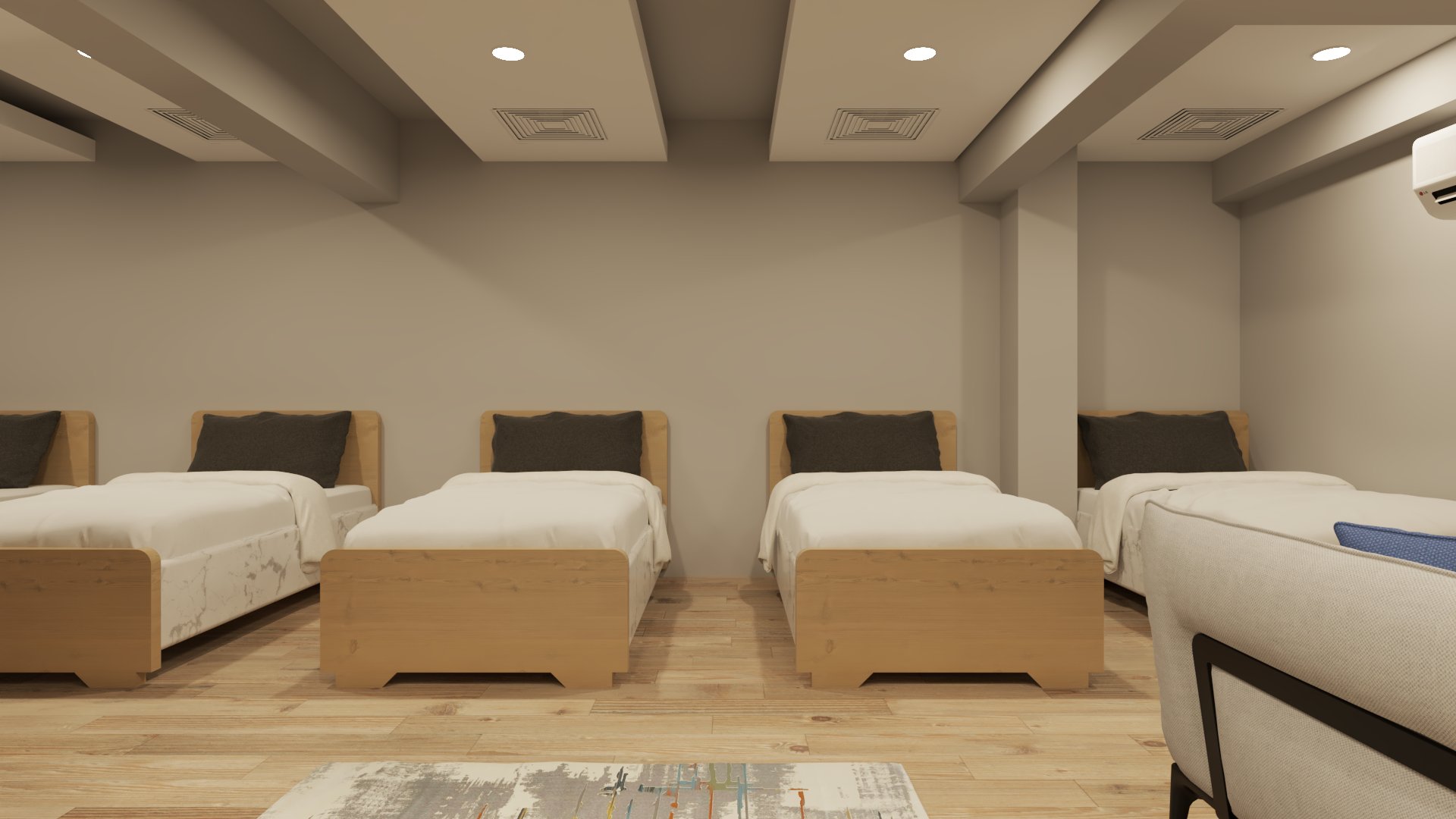Table of Contents
In 2025, Smart & Accessible Senior Living Design has become the cornerstone of compassionate and future-ready architecture. Around the world, interior designers and architects are crafting environments where seniors can thrive — spaces that prioritize safety, independence, and emotional connection.
Gone are the days of sterile, hospital-like care homes. Today’s old age homes embrace intelligent systems, ergonomic layouts, and biophilic design principles that nurture both body and soul. This global evolution in senior living architecture marks a shift from basic care to holistic well-being.
The Global Shift Toward Smart & Accessible Living
According to the World Health Organization, the population of people aged 60+ will double by 2050. This demographic transformation demands a revolution in how we approach housing and care.
Globally, nations are integrating smart home technologies, inclusive architecture, and sustainable practices to design age-friendly environments.
Key trends include:
-
Digital health monitoring systems
-
Barrier-free interiors
-
Community-based living models
-
Environmentally conscious materials
“Designing for seniors is designing for humanity — because accessibility benefits everyone.”
Universal Design for Every Age
At the core of smart and accessible senior living design lies the principle of universal design — creating spaces that everyone can use, regardless of age or ability.
Key features include:
-
Step-free entrances
-
Lever-style door handles
-
Anti-slip flooring
-
Adjustable countertops
-
Ample circulation space
These features ensure that senior living environments remain adaptable, dignified, and easy to navigate — without feeling “institutional.”
Smart Technology in Senior Living Homes
Technology has become an ally in senior care, enhancing comfort and safety while promoting independence.
Examples of Smart Integrations:
-
Voice-Activated Systems – Control lights, blinds, and appliances hands-free.
-
Health Sensors – Monitor vital signs and detect falls.
-
AI Companions – Provide conversation, medication reminders, and emotional support.
-
Adaptive Lighting – Mimic natural daylight to improve sleep cycles.
These innovations make homes safer while offering reassurance to families — blending functionality with warmth.
Accessibility Meets Aesthetics
Accessibility should never compromise beauty. Modern design balances practicality with visual appeal through:
-
Contrasting colors for depth perception
-
Warm, ambient lighting
-
Curved furniture to prevent injury
-
Acoustic treatment for noise control
This balance transforms old age homes into boutique-style sanctuaries that radiate comfort, not clinical efficiency.
Emotional Design for Senior Well-Being
Aging gracefully is about more than physical support — it’s about emotional security. Designers now focus on psychological comfort through layout and ambiance.
Emotional Design Techniques:
-
Biophilic Elements: Plants, natural light, and earthy materials to connect with nature.
-
Personalization: Spaces that allow residents to display personal photos or art.
-
Community Zones: Shared lounges and hobby areas promoting interaction.
Research from the American Psychological Association shows that such environments significantly reduce depression and anxiety among older adults.
Sustainable and Healthy Architecture
Eco-conscious senior living design ensures not just sustainability but long-term health. Green materials and efficient systems are now must-haves in global old age home design.
Sustainable strategies include:
-
Solar-powered energy systems
-
VOC-free finishes and paints
-
Rainwater harvesting
-
Thermal insulation for energy savings
A healthy building equals a healthy resident — sustainability supports both people and planet.
Cultural Sensitivity and Global Relevance
While design principles are global, the execution is deeply cultural.
-
Asian countries emphasize multi-generational living spaces.
-
Western countries focus on independent senior communities.
Designers now merge these models — creating hybrid living spaces that blend autonomy with connection, ensuring global adaptability.
The Shape Interiors’ Approach to Senior Living Design
The Shape Interiors is the best for Interior Design Consultancy & 3D Modelling services for both Residential & Commercial Spaces.
Founded in 2017 by Kazim Ratnani, The Shape Interiors has become a trusted global name in interior design consultancy and 3D visualization. Our mission is simple: create designs that balance elegance, purpose, and personalization.
We deliver 360° renders that help clients visualize their future spaces before a single brick is laid — a powerful tool for senior living developers and architects.
Our firm believes:
“A space for seniors should feel like home — not a facility.”
Learn more about our approach by exploring our Project Portfolio.
Key Takeaways for Designers and Families
To create successful senior living spaces in 2025 and beyond, keep these insights in mind:
-
Prioritize safety without sterility.
-
Embrace smart automation that supports independence.
-
Design for comfort, community, and culture.
-
Visualize before you build — leverage 3D modelling.
-
Keep sustainability at the heart of every choice.
A New Era of Senior Living
The evolution of smart and accessible senior living design in 2025 marks a milestone in how we view aging — not as decline, but as opportunity. Today’s old age homes are intelligent, inclusive, and emotionally resonant spaces where seniors can live independently with dignity.
The Shape Interiors continues to pioneer this transformation through 3D visualization, universal design principles, and client-centric consultancy.
Ready to create a future-ready senior living space?
Reach out to The Shape Interiors through the WhatsApp icon on the bottom right of our website — and let’s design comfort, connection, and care together.





